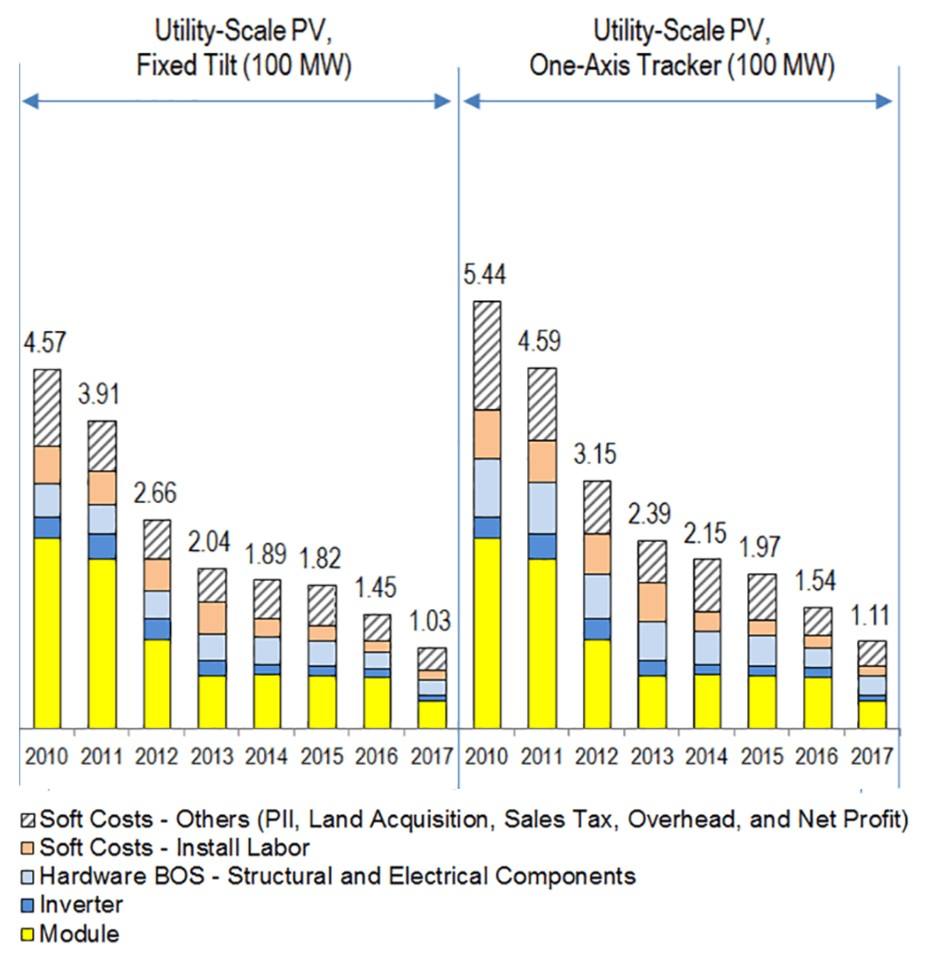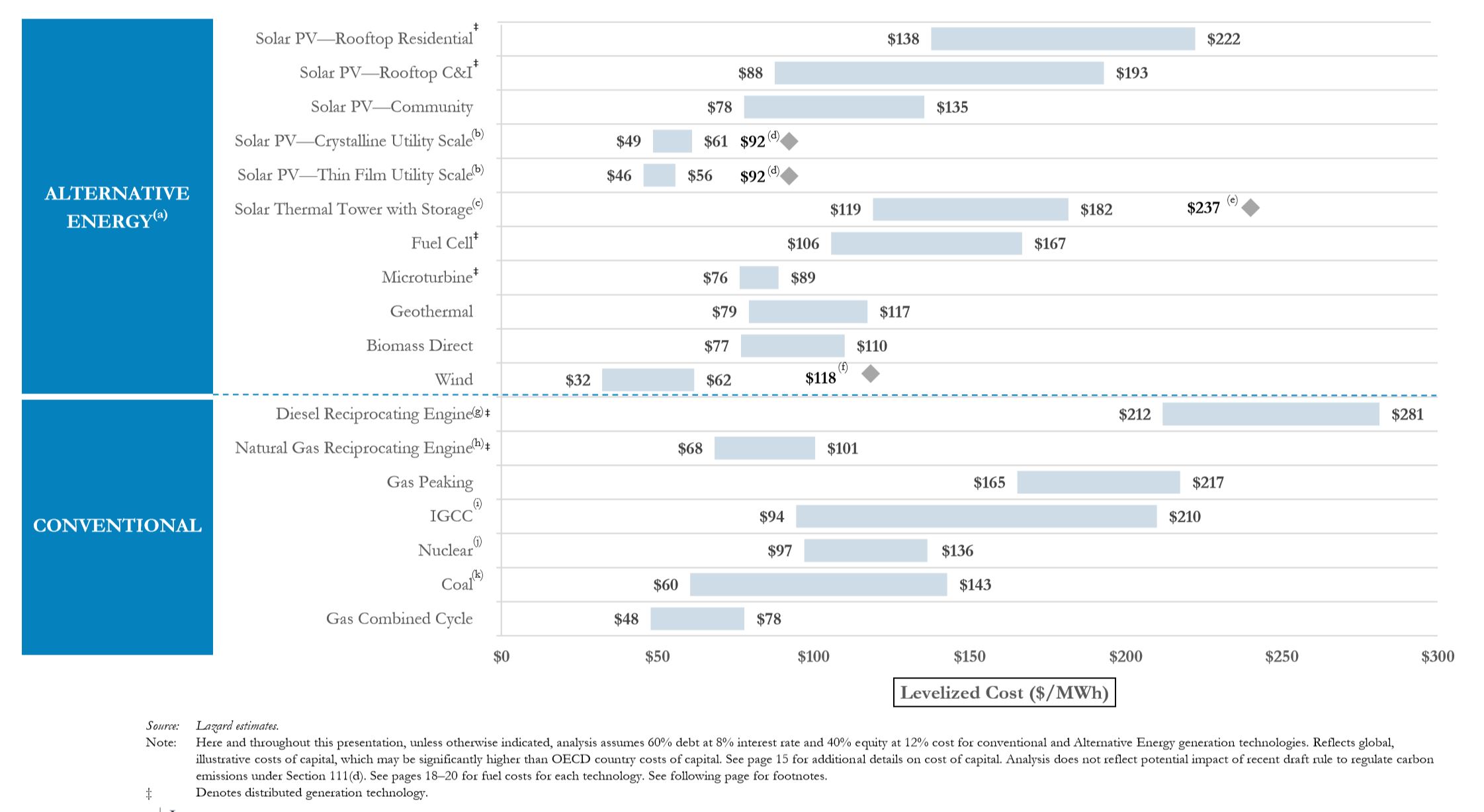Chile’s Ministry of Energy: Market-Driven Approaches to Tackling Climate Change

This essay examines how Chile’s Ministry of Energy is successfully subjecting renewable energy projects to market economics and providing a forum for fair competition and innovation by implementing an auction-driven pricing strategy.
Numerous countries set to suffer the worst potential impacts from climate change are the least prepared [1]. Not so Chile: while Chile ranks as a top 10 most-affected-by-climate-change country [1], a University of Notre Dame study that provided the baseline for the 2017 World Economic Forum on Latin America found that Chile is among the 30 countries best positioned to deal with climate change [2, 3]. This essay examines how Chile’s Ministry of Energy is successfully subjecting renewable energy projects to market economics and providing a forum for fair competition and innovation by implementing an auction-driven pricing strategy. Whether the promised market outcomes can be delivered upon remains to be proven out.
Global warming is a serious concern for Chile’s Ministry of Energy. Chile is one of the top 10 potentially most affected countries by climate change, with climate change contributing to heat waves, extreme precipitation, and flooding of coastal areas, leading to forced population migration and destruction of land and marine habitats [1, 4]. The Ministry of Energy is legally mandated to ensure that clean sources represent 20% of power generation capacity by 2025 [5].
While providing quotas or feed-in tariffs for renewable energy has been a popular mechanism for encouraging renewable energy adoption in many advanced economies around the world, Chile’s Ministry of Energy is relying on an auction model whereby energy companies competitively bid on wind and solar power contracts [6]. Globally, prices of wind and solar energy are declining rapidly – utility-scale solar energy prices have fallen by 80% since 2010 [7].
Utility-Scale PV Costs (100MW): 80% Cost Reduction since 2010 [7]
Conditions in Chile are even more favorable given that Chile boasts some of the highest rates of solar radiation in the world [8]. Chile’s auction model is powerful because it ensures that the government enters into market-efficient pricing contracts, both from a technological and geographical standpoint. While global average costs for utility-scale solar energy currently are around $50-$60/MWh [9], Chile’s auction model has encouraged for local pricing to reflect the benefits of favorable conditions in e.g. the Atacama desert, with the Ministry receiving a record-low bid of $21/MWh in a recent bidding round – the second lowest in the world after Saudi Arabia [10]. At these rates, solar energy is financially significantly more attractive than coal-powered energy bids recently received at the $60-$70/MWh level [11]. Against a global average of levelized costs of energy, regardless of geography or source of origination, these costs are extremely competitive [9]:
Not only does the Ministry of Energy attempt to grow renewable energy as a share of the overall power mix and drive towards economically viable outcomes, but the Ministry is also addressing the longer-term problem of intermittency. For renewable energy to become 100% of the power mix, we must find a way to have consistent production from renewable energy – not just production whenever locally, the wind blows or the sun shines [12]. This can among other things be achieved through energy storage or energy transmission. The Ministry of Energy is encouraging a long-term focus on these issues by supporting projects like the 24/7 solar plant in the Tamarugal region: the solar plant has in-built over-night energy storage via a newly developed molten sand technology [13]. The Ministry has also been accepting mixed wind-solar project proposals, which reduce sole reliance on either of the elements [14].
Apart from the encouraging steps that the Ministry is taking already, I think the Ministry could also focus on virtual power plants. Virtual power plants can intelligently ramp production up or down depending on wind conditions and power consumption, which helps with grid reliability and also provides services such as power balancing, import and export of power, and voltage control [15]. Virtual power plants could be integrated across the country and then intelligently distribute energy as needed. Especially given the rapidly changing weather conditions throughout Chile, a virtually integrated power plant network could significantly reduce intermittency concern.
To me, the single largest outstanding concern is that while the auction model has produced historically low prices, the prices are based on forecasted required electricity delivery rates, and thus inevitably bake in expected cost declines in the industry. I worry that in an attempt to win auctions, energy companies bid unrealistically low prices that they then cannot deliver on. This is exemplified by Abengoa, the parent company behind some of Chile’s most promising solar projects in the Atacama desert, having filed for bankruptcy recently [16]. Additionally, with coal prices increasingly falling out of favor in the developed world, a demand-driven lower pricing spiral may persist, making coal generation competitive with renewable projects, and challenging wins based on economic superiority. (763 words)
Bibliography
[1] Kreft, Soenke et al. “Global Climate Risk Index 2017.” Germanwatch, 2016. https://germanwatch.org/de/download/16411.pdf
[2] University of Notre Dam Global Adaptation Initiative. http://gain.nd.edu/our-work/country-index/
[3] World Economic Forum. https://www.weforum.org/agenda/2017/03/which-latin-american-countries-are-best-prepared-to-tackle-climate-change/.
[4] Warn, Elizabeth and Susana Adamo. “The Impact of Climate Change: Migration and Cities in South America.” World Meteorological Organization, 2017. https://public.wmo.int/en/resources/bulletin/impact-of-climate-change-migration-and-cities-south-america
[5] Ministry of Energy, Chile. “Annual progress report: A good year for Chile.” 2016. http://www.energia.gob.cl/sites/default/files/annual_progress_report_-_eng.pdf
[6] International Renewable Energy Agency. “Renewable Energy Auctions – Analyzing 2016.” 2017. http://www.irena.org/DocumentDownloads/Publications/IRENA_REAuctions_summary_2017.pdf
[7] National Renewable Energy Laboratory. “NREL Report Shows Utility-Scale Solar PV System Cost Fell Nearly 30% Last Year.” 2017. https://www.nrel.gov/news/press/2017/nrel-report-utility-scale-solar-pv-system-cost-fell-last-year.html
[8] Simon Currie, et al. “Masen’s NOOR solar energy projects.” Norton Rose Fulbright. 2017.
[9] Lazard. “Levelized Cost of Energy Analysis – version 10”. 2016. https://www.lazard.com/media/438038/levelized-cost-of-energy-v100.pdf
[10] Weaver, John Fitzgerald. “Chilean solar cost down 26%, as important as Saudi Arabia at 1.79¢/kWh.” Electrek. 2017. https://electrek.co/2017/11/08/chilean-solar-down-26-as-important-as-saudi-arabia-at-1-79%C2%A2-kwh/
[11] Mills, Luke. “H2 2016 Global LCOE Outlook.” Bloomberg New Energy Finance, 2016.
[12] Goldman Sachs. “The Great Battery Race – Solar + Storage takes center stage, but is it ready for primetime?” 2016.
[13] Geuss, Megan. “Three solar thermal plants in Chile could generate electricity 24 hours a day.” Ars Technica, March 14, 2017, https://arstechnica.com/science/2017/03/plans-for-a-24-hour-solar-thermal-plant-earn-environmental-approval-in-chile/, accessed November 2017.
[14] PV Magazine. “$25.38/MWh bid sets new record low for 24/7 block mixing wind and solar at Chile Tender.” November 8, 2017, https://www.pv-magazine.com/press-releases/25-38mwh-bid-sets-new-record-low-for-247-block-mixing-wind-and-solar-at-chile-tender/, accessed November 2017.
[15] HSBC Global Research. “Renewables and the Grid.” 2016.
[16] Hals, Tom and Tracy Rucinski. “Abengoa unit files for U.S. bankruptcy with up to $10 billion in debt.” Reuters, February 24, 2016. https://www.reuters.com/article/us-abengoa-bankruptcy-usa/abengoa-unit-files-for-u-s-bankruptcy-with-up-to-10-billion-in-debt-idUSKCN0VX2OH
All links accessed on 11/14/2017.





It’s been very inspiring to see Chile’s leadership on clean energy, as illustrated very well by this detailed piece. However, measures Chile takes to make its own energy system more renewable will have a limited impact since the majority of the climate impacts that it faces will be caused by emissions from other countries. How can a country like Chile intervene at a broader level to reduce global emissions? It could continue its strong leadership on renewables. The auctions mentioned in the piece have been an example to many other countries, who are using the Chile model to secure cost reductions at home and increasing the amount of renewables supply around the world. Chile can work bilaterally with large emitters. Carbon offsets would allow Chile to reduce its own emissions while larger emitting nations pay. Chile can also work through regional initiatives, partnering with other Latin America countries, to promote climate measures and increase its clout internationally at climate negotiations.
The key to achieving 100% renewable energy mix is absolutely storage as mentioned in the piece. The question remains, will it follow Moore’s law, where the rapid increase in capacity and production will lead to an exponential decline in prices as seen in the semiconductor and solar industries? The current constraint with storage is the duration element – how long can batteries hold the energy without realizing energy losses.
In addition to battery storage, including traditional chemical properties like Lithium Ion, other innovative approaches are being considered for large-scale renewable integration. Molten Salt is considered a viable option, used by companies like SolarReserve and BrightSource, but is difficult to scale to megaprojects. More traditionally, pumped hydro can be considered as a storage option for utility projects but the land constraints are inherent. [1]
The road to 100% renewable energy mix is long and Moore’s Law holds the key for significant change in the near future.
[1] Solar After Dark: BrightSource Adding Molten Salt Storage for Power Plants, https://spectrum.ieee.org/energywise/green-tech/solar/solar-after-dark-brightsource-adding-molten-salt-storage-for-power-plants
I find this article interesting from the climate change point of view, but also from the view that sustainable energy is becoming competitive with other sources of energy. Kieron mentions in his comment that Chile could expand its solar power to help other countries reduce their emissions through carbon trading. However, the low cost of producing solar power mentioned in the bid, which could go even lower in the future, could drastically change Chile’s relative strengths in the world. A low cost of of energy will make it increasingly attractive to locate energy intensive production in Chile compared to other countries, potentially leading to a boom in new industries for Chile. Moving energy intensive industry to Chile could achieve many of the same effects that Kieron mention in his comment about carbon trading, but it could be even more beneficial for Chile to move entire industries to the country compared to selling carbon quotas.
I am concerned that your point about unrealistic bids for energy contracts runs contrary to the narrative about Chile being an innovative leader in the renewable energy space. If those companies are unable to deliver their promised bids, or are forced into bankruptcy, I think the Chilean renewables sector could face setbacks similar to those suffered by US solar companies after the Solyndra bankruptcy.
Separately, if Chile is able to produce economically viable solar energy, it could have huge impacts on the Chilean economy. The development of a renewable energy sector, with potential exports of energy, technology, and manufactured goods, would enable diversification of the economy away from its heavy concentration on mining and fluctuations in currency prices. This industry could also drive foreign direct investment in Chile and provide increased employment opportunities.
In short, by focusing on the renewable energy sector, the Ministry of Energy may be doing well both for Chile and for the environment.